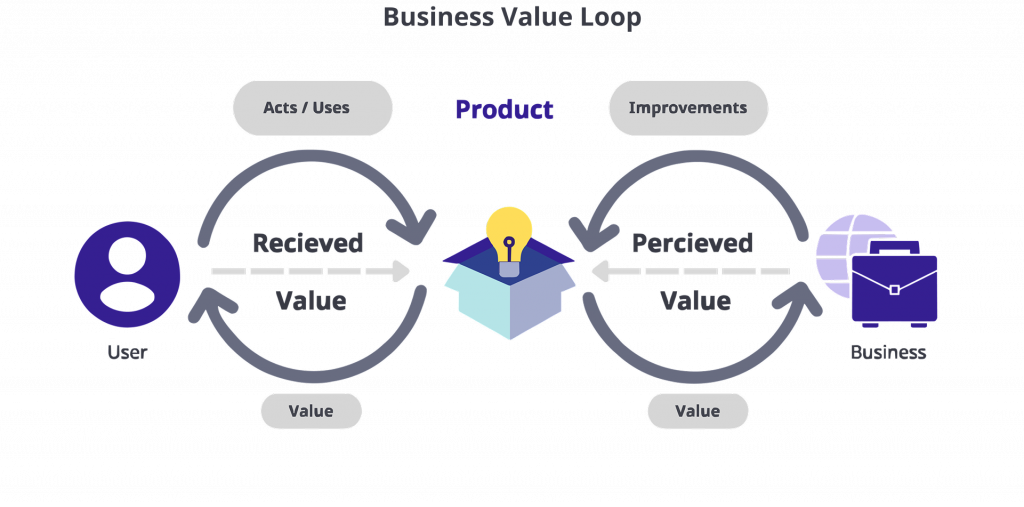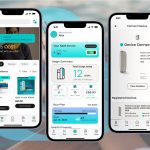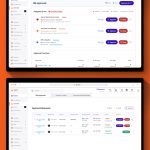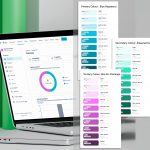MidShift: Shaping a Career Development Platform with a Human-Centric AI Roadmap

Introduction
MidShift set out to transform career growth by integrating mentorship, AI-driven roadmaps, and an LMS
In October 2023, MidShift was set out to accelerate career growth through mentorship and complementary services. However, user research uncovered a significant market gap, leading to the AI-generated roadmap becoming the platform’s core service.
My role
I contributed to the overall design process and oversaw aspects related to product scoping, user flows, wireframe, rapid prototyping, and usability testing.
Additionally, I conducted user research, facilitated co-workshops, and contributed in synthesising research findings to produce viable ideas.
Team
- 2 UX/UI designers
- 1 Full stack developer
- 1 ML Engineer
Tools
- Figma
- Illustrator
- Bolt
Duration
- 5 weeks
Understanding the Problem
Users Craved Clear Guidance: Why Mentorship Alone Misses the Mark
Career development platforms often left users feeling lost and confused. Mentees found it hard to choose the right mentors, often unsure about how to connect or what to expect. Mentors, on the other hand, struggled to offer tailored advice without spending a lot of time getting to know each mentee’s specific situation. This whole process feels disorganised and ineffective for both sides, which raised this question for us:
HMW simplify career guidance for both mentors and mentees so that the process feels more personalised and effective?

Our Solution
A personalised career roadmap to simplify guidance, enhance mentorship, and support your growth
Shape your future with a roadmap that grows with you
Personalise Roadmap Generation
Tailored career plans, crafted just for you:
- Trained AI using updated senior professional CVs to design informed, realistic paths.
- Analyse your tech and soft skills to build a step-by-step roadmap for career growth.
- Visualise your career growth with real-time analytics that shows clear progression and milestones.

Mentor Matching
The right guidance, from the right people:
- Match with mentors based on your target role, industry, personality, and roadmap needs.
- Benefit from career coaches who provide customised advice and continuous support.
- Build meaningful mentor relationships that align with your career aspirations.

Integration of Learning Resources
All the tools you need, in one place:
- Access courses from top platforms (currently integrated with Coursera).
- Discover curated articles, books, and materials relevant to your field and goals.
- Stay updated with the latest resources to accelerate your learning and growth.
The Process
Research and Identifying the Need
Interviews and analysis exposed gaps in mentorship, guiding the creation of a user-focused career roadmap.
Our stakeholder interviews revealed key challenges for mid-level professionals seeking efficient paths to senior roles: finding aligned mentors, fitting skill development into busy schedules, and needing flexible career planning. Existing solutions—from traditional education to self-learning platforms—often lack personalisation, sustained feedback, and structured support. These gaps reinforced our vision for an AI-driven mentorship platform that tailors guidance, addresses evolving skill needs, and accelerates professional growth.

Analysing Market & Competitions
Analysis exposed inefficient tools in current platforms, reinforcing the need for a streamlined solution.
Once the direction was set, I conducted a competitive analysis to understand market solutions and their functionality. It revealed that existing mentorship platforms were resource-heavy and lacked efficient mentor-mentee connection tools, highlighting the need for a streamlined solution.
We hypothesised that a career roadmap could address mentees’ uncertainty, reduce mentors’ workload, and create a unique value proposition for MidShift.


Validating Our Assumptions
I interviewed both mentees those seeking career growth and mentors from existing platforms. critical insights emerged:
- Mentees’ Challenges: Mentorship was time-consuming and expensive. They struggled to find the right mentor and spent significant effort explaining their goals, skills, and potential.
- Mentors’ Challenges: Effective mentoring required time-intensive exploration of a mentee’s personality, aspirations, and abilities beyond their resume, making it challenging to provide impactful guidance.


Identifying pain points of persona
Low clarity and support derail progress
Although new mentees often begin with optimism, many quickly lose direction without clear milestones or structured feedback. A lack of tangible progress can make mentees question whether they’re moving closer to—or further from—their career aspirations.

For mentees, the focus was on bridging skill gaps and accessing the right mentorship.

For mentors, it revolved around providing structured guidance while effectively tracking mentees progress and growth.

Area of improvement found were that…
Progress isn’t always visible
Mentees crave quick wins or micro-validations—especially early on. Without consistent checkpoints or measurable progress indicators, motivation can fade fast, leaving mentees unsure of their actual growth.
No Deadlines, No Progress: Mentorship Loses Momentum Without Time-Bound Goals
Without specific time-bound goals or reminders, users deprioritise skill-building and mentorship sessions. It’s easy for mentees to think, “I’ll work on that roadmap next week,” which often becomes next month—or not at all.
Time Constraints and Self-Focus Are the Norm, But a Clear Personal Payoff Drives Engagement
Mentors have limited bandwidth to engage deeply, and mentees juggle busy schedules, craving a streamlined process. Interviews show that aligning the experience with immediate career goals significantly boosts motivation, while unclear personal payoffs lead to lower commitment and follow-through.
From Insights to Actionable AI Solutions
A key part of this process was aligning business goals with user needs.
We analysed user needs to uncover opportunities, emphasising AI-generated roadmaps and mentorship. By collaborating with stakeholders, ML engineers, and the CTO, we addressed resource constraints and startup challenges. Together, we defined technical requirements, ideated designs, and developed a user-centric MVP that balanced innovation with practical feasibility.

Understanding User Needs and Opportunities for Growth
Once we identified user needs and areas for improvement, we analysed key opportunities to refine the roadmap. We outlined the core services—AI-generated roadmaps and mentorship—along with their features and applications, collaborating closely with stakeholders and developers in several meetings.

Evaluating and Implementing Technical Solutions
To better understand the AI’s capabilities in creating personalised career roadmap, we collaborated with ML engineers and the CTO. We faced challenges such as:
To better understand the AI’s capabilities in creating personalised career roadmap, we collaborated with ML engineers and the CTO. We faced challenges such as:
- Time constraints
- Limited resources
- The complexities of building the AI-generated roadmap neural network.
We developed a comprehensive diagram to ensure feasibility, detailing required inputs, expected outputs, and the overall AI roadmap generation functionality.

Design Ideation and Bringing Ideas to Reality
We brainstormed the roadmap’s visual structure and collaborated with stakeholders, the CTO, and the ML engineer to align technical feasibility with implementation constraints. After evaluating and voting on ideas, we finalized the concept.

Top-voted Ideas Shaping an Effective User Flow and MVP
Using the top-voted ideas, we developed a user flow focusing on enhancing the user experience. The final step was designing the MVP, ensuring it met both user expectations and technical feasibility.

Designing the AI Generated Roadmap MVP
A Minimal Roadmap to Validate the Concept
To bring Midshift’s roadmap generator to life, we prioritised rapid execution to validate the concept and gauge market interest. With limited resources and a dataset of 9,000 resumes, we focused on building a functional prototype that could quickly test user value while balancing constraints and demonstrating feasibility to potential investors.
Objective: Test the hypothesis and assess market interest under tight constraints.
Approach:
- Built a functional prototype to provide a clear, structured career roadmap.
- Analysed user-selected fields, suggested target roles, and generated basic roadmaps based on technical skills.
Trade-offs:
- Limited usability testing and iteration due to resource constraints.
- Delivered a simplified solution aimed at validating the broader vision.
Outcome: Early feedback helped refine our direction while laying the foundation for future iterations.
Ideation and Wireframing

Linear roadmap design
Promising Launch,Uncovering Gaps
Early Analytics Revealed What Worked and What Didn’t
The marketing team adopted an MVP approach to attract users and gather valuable insights for the AI Career Roadmap Generator. Below is the Google Analytics data we captured right after launching our MVP for the AI Career Roadmap Generator.
Engagement Overview Insights:
- Strong Initial Interest: Users averaged ~2 minutes 33 seconds, showing immediate engagement.
- Engagement Dip: A quick spike followed by a drop indicates some friction or unmet expectations.

Retention Overview Insights:
- Retention Challenge: Only 999 of 3,200 new users returned, revealing significant drop-off.
- Feature Feedback: This gap signals that while some features resonated, others need refinement, prompting further user research.

While the initial engagement metrics were encouraging, it became clear there were several areas needing improvement—some features worked well, others didn’t resonate as we hoped.
To uncover these nuances, we combined quantitative analytics with direct feedback from user interviews and surveys, prompting us to dive into the next iteration.
Gathering Feedback
A static roadmap with limited data fails to retain users
The MVP prototype was launched to achieve two goals: measure user engagement and generate interest from stakeholders for investment. While this approach enabled us to move quickly, we anticipated gaps in usability and personalisation, viewing feedback as a key opportunity to refine the product direction.
Key Learnings:
- Users downloaded their roadmaps but rarely returned, as the static design didn’t adapt to individual needs.
- The AI required more robust data and algorithms to meet user expectations.
These findings underscored the challenges of prioritising speed over depth in validation. While our focus on rapid execution allowed us to gain insights and secure initial interest, it also highlighted the importance of early usability testing and iterative refinement.

“>The Speed Trade-Off: Lessons from Launching an MVP
The decision to launch a minimally viable product rather than an iterative prototype was both a strategic risk and a valuable learning experience. While it allowed us to validate the core idea and attract stakeholder interest, it also highlighted the trade-offs of prioritising speed over deeper user validation.


Shaping the Next Version
Redefining the Roadmap: A More Personalised Experience
The first version validated the concept but lacked flexibility and personalisation. User feedback highlighted key gaps, driving us to rethink how career planning should work. To address these challenges, we expanded our team and redesigned the roadmap to be interactive, intelligent, and adaptive to individual needs.
Key Insights That Drove Change:
- Interactivity: Users needed features to track progress, edit tasks, and adapt goals.
- Mentorship: Better integration was required to match users with mentors at the right stages.
- Resource Access: Users sought curated tools, courses, and content for skill development.

The roadmap shifted from a linear structure to a dynamic tool that adapted to the user’s career progression.This version allowed users to interact with their roadmap,match with the best suited mentor, track progress, and access curated resources like Coursera courses.

Pivoting business Objectives
Evolving Beyond AI Roadmaps: Pivoting Midshift’s Strategy for Scalable Growth and User-Centric Impact
As we refine our second roadmap, key insights from stakeholders and market feedback guide us to pivot our approach. Our initial focus on mentorship services revealed challenges in scalability, retention and engagement. Recognising these gaps, we are now setting our sights on a more holistic solution that addresses the entire journey of learning, upskilling, and career advancement.
Strategic Direction:
In collaboration with our users and stakeholders, we are redefining Midshift’s product strategy to create an all-in-one career development ecosystem. At the heart of this vision is our machine learning–driven career roadmap generator, which we continue to test and refine. This core feature is envisioned to power a dynamic platform that:
Community-Driven Growth (Hypothesis):
We hypothesise that allowing users to share progress, exchange workflow templates, and co-create resources with mentors and peers will cultivate a dynamic, supportive environment—an approach we aim to validate through research and iterative design.
Complementary Mentorship:
Our initial mentorship focus yielded valuable insights; in this pivot, mentorship becomes part of a broader ecosystem, providing targeted support alongside other career-enhancing tools.

Delivers Adaptive Guidance:
We aim to enhance our tested machine learning algorithm, extending its role to power an adaptive, personalised career roadmap that evolves in real time with users’ progress and learning milestones.
Holistic Career Support:
The new platform aims to integrate essential resources—from AI tutorials for learning to adaptive planning tools—that address every stage of the career advancement process, reducing the ambiguity of the path ahead.
Forward-Looking Approach:
This pivot is not a finished product but a strategic hypothesis that lays the foundation for further research, iteration, and design. By centring our efforts around a scalable, AI-powered career roadmap and its surrounding ecosystem, we aim to address existing revenue challenges while creating a more meaningful, user-centric solution. Our ongoing design process remains committed to exploring new features and refining our approach, ensuring that every decision aligns with both business objectives and the evolving needs of modern professionals

Other Works
- IQOS Companion App
 IQOS Companion App: A UX/UI Design Story Exploring How Data Can Drive… Read more: IQOS Companion App
IQOS Companion App: A UX/UI Design Story Exploring How Data Can Drive… Read more: IQOS Companion App - BILL
 Simplifying Approval Processes:A UX Case Study on Enhancing Visibility and Usability of… Read more: BILL
Simplifying Approval Processes:A UX Case Study on Enhancing Visibility and Usability of… Read more: BILL - Jira Case Study
 Exploring a Concept: Updating Jira’s Color Palette to Enrich the User Experience… Read more: Jira Case Study
Exploring a Concept: Updating Jira’s Color Palette to Enrich the User Experience… Read more: Jira Case Study
